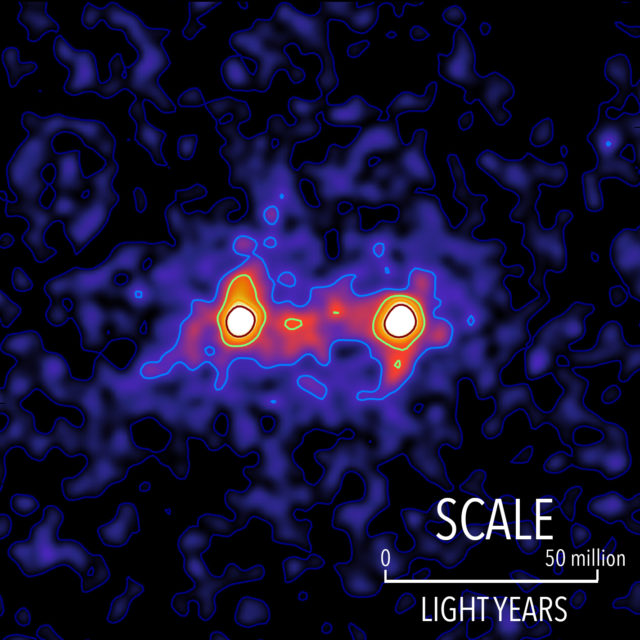
Dark matter filaments bridge the space between galaxies in this false color map. The bright galaxies are shown in white and the presence of a dark matter filament bridging is shown in red. (S. Epps & M. Hudson/University of Waterloo)
Dark Matter Filaments of Cosmic Web Imaged
Two Canadian researchers say that they have constructed a composite image of dark matter filaments that make up what cosmologists call the cosmic web.
Scientists have been finding evidence that our universe may be anything but random and that everything is actually organized and connected to each other like an enormous spider web.
The researchers from the University of Waterloo in Ontario, Canada used a special technique called weak gravitational lensing to make their findings.
After gathering a number gravitational lensed images of more than 23,000 galaxy pairs, the scientists were able to create a composite image, they say, shows the presence of dark matter between the galaxy pairs.
The Canadian duo found that the dark matter filament bridges are strongest between galaxy systems that are less than 40 million light-years apart.
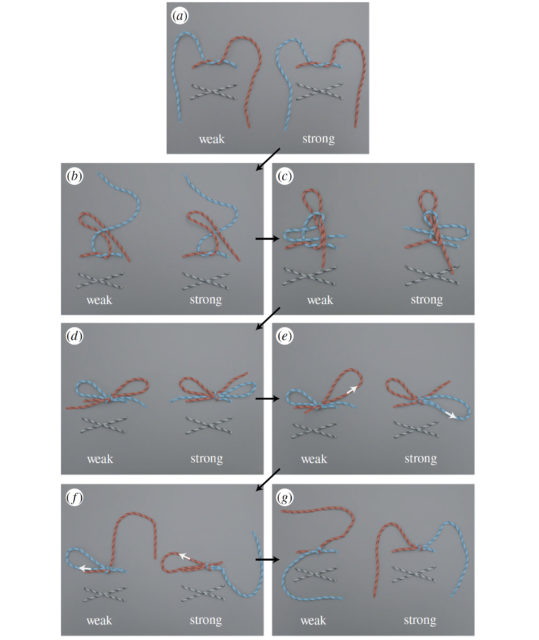
An overhead view of how to tie the weak knot (left) and the strong knot (right). (University of California, Berkeley)
Shoe-String Theory
A new study concerning string theory was recently released by mechanical engineers at University of California, Berkeley.
Before you think this concerns a quantum or particle physics hypothesis, this study concerns shoe strings or why our shoe laces manage to keep getting untied.
They found out that the failure of a shoelace knot takes place in just seconds and is set-off by a series of complex force reactions that act like an invisible hand.
These forces loosen the knot and then tug on the free ends of the laces until they become undone.
While tying shoe laces as tightly as possible will still result in the knot becoming untied eventually, doing so, at least, will give you more time before you have to stop and re-tie your shoes.
Personally, giving my shoe laces a double-bow seems to keep them secure.
MAVEN Finds Metal in Martian Atmosphere
NASA’s MAVEN spacecraft, which has been circling Mars since September 2014, has detected metal in the Martian atmosphere.
Joseph Grebowsky of NASA’s Goddard Space Flight Center is co-author of a study that details the discovery.
He says the orbiting space probe made the first direct detection of the permanent presence of metallic ions in the ionosphere of a planet other than Earth.
Grebowsky explains that because these metallic ions can last a long time and be carried far from the region of their origin, by winds and electric fields, they can be used to convey motion in the Martian ionosphere, in a way similar to how a lofted leaf can reveal wind direction.
Scientists say that the metal comes from a constant barrage of tiny meteoroids that fall onto Mars.
MAVEN recently helped researchers determine that the solar wind and radiation were the culprits behind stripping the once rich and thick atmosphere from Mars billions of years ago.

A second Great Spot has been discovered on Jupiter. Scientists say it was created by the powerful energies exerted by the giant planet’s polar aurorae. (Joseph DePasquale, Smithsonian Astrophysical Observatory, Chandra X-ray Center)
Scientists Find Great Cold Spot on Jupiter
A team of astronomers discovered another Great Spot on Jupiter that rivals the size of the giant planet’s iconic Great Red Spot.
The Great Red Spot is actually an ongoing high-pressure storm raging in its atmosphere with winds that can reach speeds of 430 to 680 kilometers per hour.
The new discovery is called the Great Cold Spot, because scientists think it’s about 200 Kelvin cooler than the surrounding atmosphere, which they say can vary between 426 and 726 degrees Celsius.
The researchers say the Great Cold Spot was created by the effects of the giant planet’s magnetic field.
They add that Jupiter’s polar aurorae pours energy, in the form of heat that swirls around the planet, into its atmosphere. This in turn forms a region of cooling.
Compared to the slowly changing Great Red Spot, the researchers say the Great Cold Spot is much more unstable and can dramatically change size and shape in only a few days or weeks.
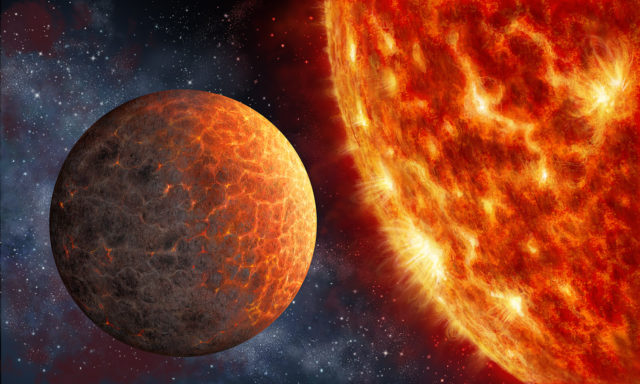
Artist’s impression of the Venus-like Kepler-1649b exoplanet orbiting an M-class star 219 light-years from Earth. (Danielle Futselaar)
Exoplanet Twin of Venus Discovered
Though a number of the exoplanets found so far have been compared to Earth, astronomers say they have found what could a twin of Earth’s neighbor, Venus.
The exoplanet is about 219 light-years away, slightly larger than Earth and orbits a dim and cool M dwarf star that’s one-fifth the diameter of our sun.
The planet, called Kepler 1649b appears to orbit tight and close to its host star and completes an orbit around it in only nine days.
Although its star is much weaker than our sun, since Kepler 1649b orbits so close, it receives 2.3 times the solar radiant energy than Earth.
While some recent exoplanet discoveries have uncovered Earth-like planets orbiting an M dwarf stars this new discovery suggests that some of these planets could very well be more like Venus.
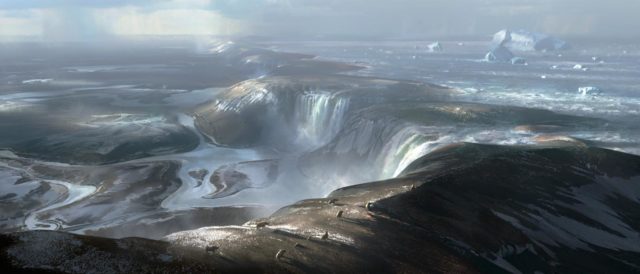
This is an illustration of what the land bridge connecting Britain to Europe may have looked like before the formation of the Dover Strait. (Imperial College London/Chase Stone)
First Brexit Physically Separated UK from France
Debate continues over the impact of the split of the UK from the European Union, known as Brexit.
But this isn’t the first time Britain separated from Europe.
Scientists say that when Earth was in the midst of an ice age, some 450,000 years ago, the English Channel which today separates Great Britain from France was dry land.
A new study is providing evidence that Great Britain was physically separated from France in two stages.
First they found that a lake which formed in front of a retreating ice sheet as it melted overflowed a natural dam-like structure that ran between the two countries along the Dover strait.
The spill was followed by what was described as a catastrophic megaflood which caused the structure to eventually fail allowing even more water to flow into the English Channel.

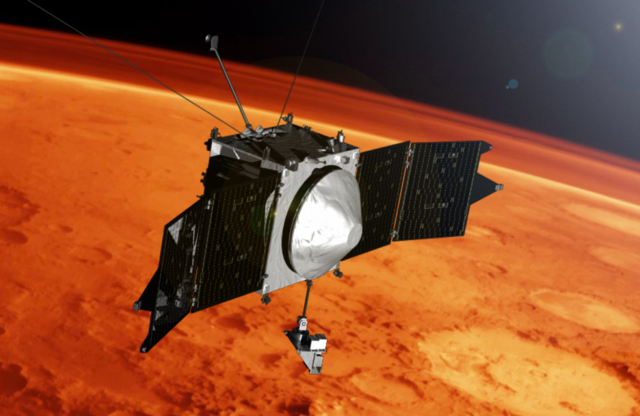





















The Scientists continue their debate in regard to the dark matter. It is or it is not? They cannot agree. One could say they are both right even though it would appear that they have not grasped the essence, or to better say the lack of essence, of the dark matter. In fact, if for Existence is intended all that is made of energy one should say that dark matter does not exist if instead with the same term Existence one wants to include even the absence of energy then it should be said that dark matter exists. That is what existed before the birth of the Universe about 14 billion years ago. Prior to the so called Big Bang there was only Void. With its expansion, energy travels like a web inside one Void which is still at the border of an expanding Universe. Instead, within the Universe, and in between the meshes of this web of energy, there is the dark matter or the non essence from one eternal Void. That is why all galaxies and the entire Universe are connected by the dark matter.
http://wwtrade.org/m/index.php/Wavevolution
Please – do you have a link to subscribe to the VOA blog for Science World? If so please send or just put me on it. Thanks!